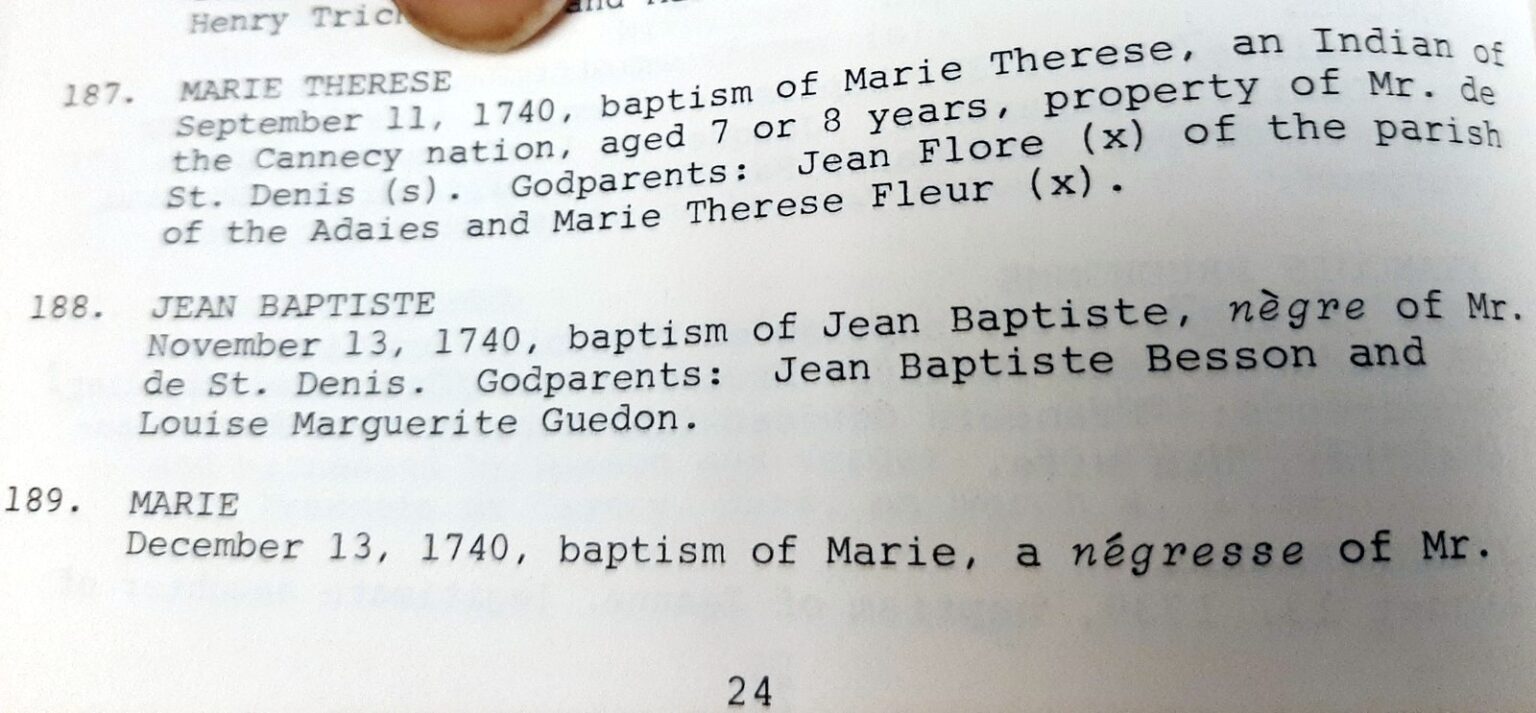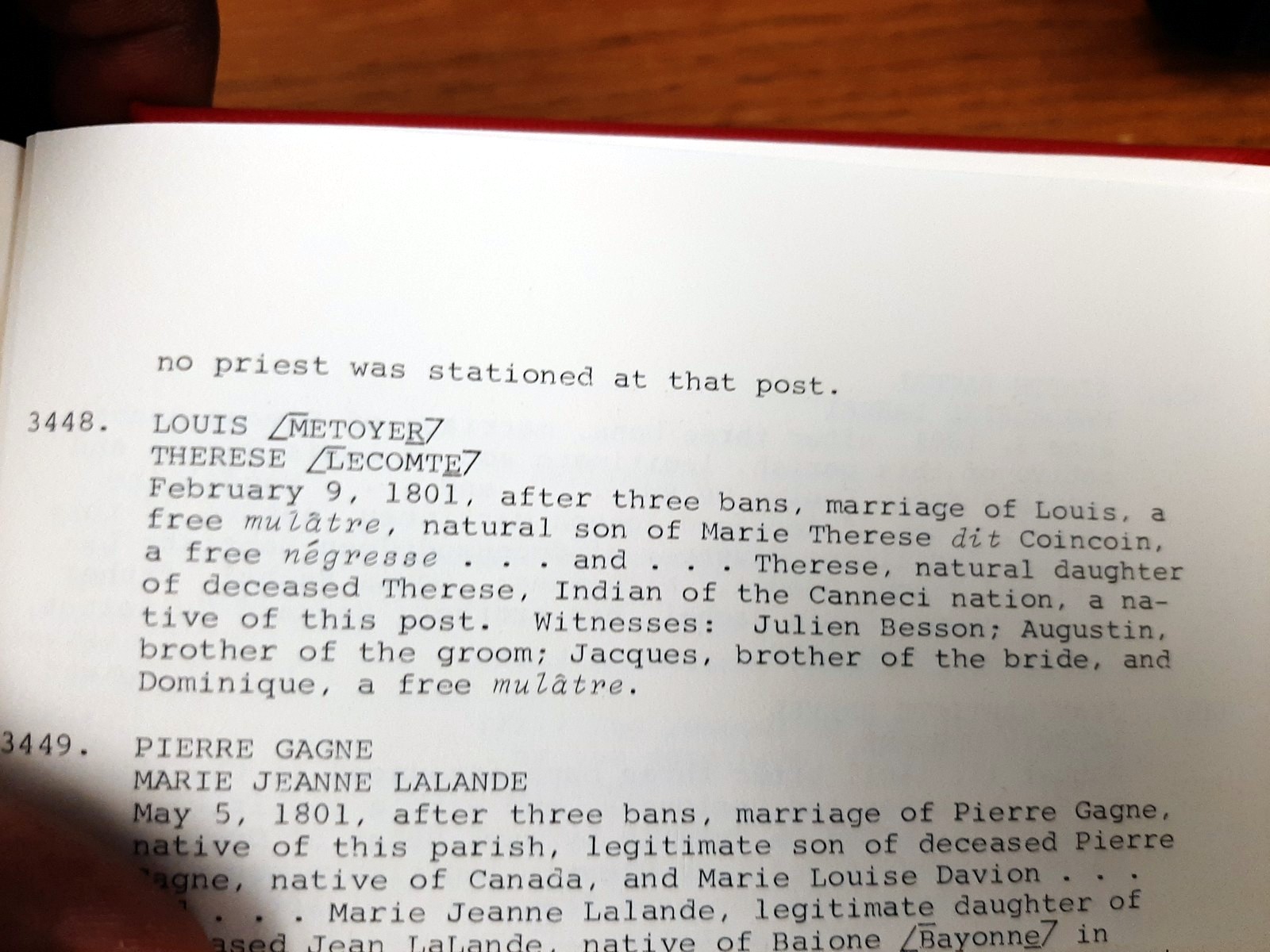Traditional territory for the Canneci Tinné in Louisiana,
followed the Red (Vermillion) River,
and included areas around Prairie Maronne & Bayou Tortue.
The Canneci Tinné were some of the first Indigenous people to trade with the French in this region. Following the notorious event known as Le Grand Derangement, when the British forcibly expelled the Acadians from the eastern provinces of Canada between 1755 and 1764, a wave of new settlers flooded our lands, claiming parcels of land that significantly diminished our ancestral territories. Land was cleared for widespread crop planting, which continued during the 18th and 19th centuries as plantations expanded, reducing habitat for game and further encroaching on Canneci Tinné territory.
The following definition is borrowed from the Louisiana Historic & Cultural Vistas website in an article titled, “Louisiana Myths: The Octoroon”. Please visit their site for further historical definitions along this line.
Sauvage (female: Sauvagesse): the person who predated the Europeans. It is difficult to pinpoint a specific hue for these often non-related small groups of dwellers. Some had (and still have) the yellowish hues of Eastern Asiatics, others had the copper hues of the griffe sauvage and still some were dark brown. One Caneci indian named Labombe and christened Marie-Thérèse was, in her 5 June 1756 baptism on Bayou Teche called a négresse.
(St. Martin Catholic Church, St. Martinville, La., Baptism folio A-1, page 3.)
Many of these images (some colorised) are from the 1930s (for educational purposes, and with the kind permission of the State Library of Louisiana). The “dance hall” building in Lafayette, donated for the “Indian School”, was known as “Ca-Si-No” and located on W. Pinhook Rd. at the Youngsville Highway (at that time, Youngsville Hwy was a dead end at Pinhook). After the school was closed, it reverted to a dance hall (now a bank sits on the property). It’s perhaps no coincidence that the building kept its peculiar name despite the change in purpose!
Many Indigenous children were sent to residential or “industrial” schools, far from their territory, culture, and families – in order to try and “re-program’ them. As you can see from the photo of Kessetta and Jack (photo from – National Anthropological Archives, Smithsonian Institution), they were taken more than 1230 miles away to Carlisle Indian Industrial School (1879 to 1918, Carlisle, PA) – at least a week to travel by horse and carriage, more than three days by train. The facility was a US Army barracks, transferred to the Dept. of the Interior for this purpose. In its history, more than 7,800 children from 140 Native Nations were taken there. Learn more: Unspoken: America’s Native American Boarding Schools [PBS DOCUMENTARY]
Click any photo for a larger view.
Selected entries showing Canneci tribal members baptisms, marriages, deaths. Spellings vary based on transcribing handwriting and original language (French, Spanish, or Latin) used to record the original entries in church documents. From Natchitoches: Abstracts of the Catholic Church Registers of the French and Spanish Post of St. Jean Baptiste des Natchitoches in Louisiana: 1729-1803 by Elizabeth Shown Mills (published 1977 ISBN: 9780931069109).
Various terms besides “Indian” were also used to denote Canneci and other Indigenous people. The term griffe was used for both offspring of French nobility and those of mixed Native ancestry. Terms like négresse, mulâtre, mulâtresse were common – though notably, the previous terms sauvage & sauvagesse were not used in these records.





















